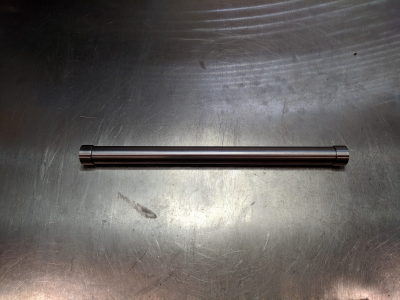My lathe is cutting a slight taper that I cannot seem to figure out.
The issue: it cuts a taper of about 2.5 thou over 6", wider at the tailstock end, measured with a Starrett mic. Yes, I am using a 3 jaw at the headstock but that should not cause a taper even if there is runout. The measured TIR of the chuck with a dowel pin is .0005"
Investigation: I figured the lathe level had drifted slightly. When I checked (Starrett machinist level) it was off slightly so I dialed in the feet to get as close as I am capable. This did not fix/change the issue. My second thought it was play in my live center. I tried again with a carbide dead center and got the exact same taper. So I figured the tailstock is off towards the back splash. I put my test bar in with the carbide center in the tailstock. I used a DTI in the tool post. I get the exact same reading at both ends of the test bar. Based on this information it seems like the lathe could not physically cut a taper. I am in a quandary.
I know we have some pretty smart people here. Hopefully someone can explain what I am missing.
The issue: it cuts a taper of about 2.5 thou over 6", wider at the tailstock end, measured with a Starrett mic. Yes, I am using a 3 jaw at the headstock but that should not cause a taper even if there is runout. The measured TIR of the chuck with a dowel pin is .0005"
Investigation: I figured the lathe level had drifted slightly. When I checked (Starrett machinist level) it was off slightly so I dialed in the feet to get as close as I am capable. This did not fix/change the issue. My second thought it was play in my live center. I tried again with a carbide dead center and got the exact same taper. So I figured the tailstock is off towards the back splash. I put my test bar in with the carbide center in the tailstock. I used a DTI in the tool post. I get the exact same reading at both ends of the test bar. Based on this information it seems like the lathe could not physically cut a taper. I am in a quandary.
I know we have some pretty smart people here. Hopefully someone can explain what I am missing.


